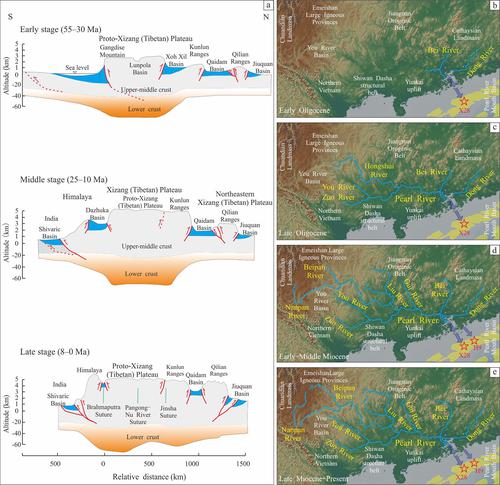当前位置:
X-MOL 学术
›
Acta Geol. Sinica Engl. Ed.
›
论文详情
Our official English website, www.x-mol.net, welcomes your
feedback! (Note: you will need to create a separate account there.)
Evolution of the Pearl River and its Implication for East Asian Continental Landscape Reversion
Acta Geologica Sinica-English Edition ( IF 3.5 ) Pub Date : 2021-01-08 , DOI: 10.1111/1755-6724.14641 Hao ZHANG 1 , Yuchi CUI 1, 2 , Peijun QIAO 1 , Meng ZHAO 3 , Xuhong XIANG 4
Acta Geologica Sinica-English Edition ( IF 3.5 ) Pub Date : 2021-01-08 , DOI: 10.1111/1755-6724.14641 Hao ZHANG 1 , Yuchi CUI 1, 2 , Peijun QIAO 1 , Meng ZHAO 3 , Xuhong XIANG 4
Affiliation

|
As the link connecting the South China Continent and the northern South China Sea (SCS), the Pearl River is the focus of sedimentology and petroleum geology research. Its evolutionary process and controlling factors are of great significance in revealing the East Asian continental landscape reorganization during the Late Cenozoic. Based on published data, ‘source‐to‐sink’ provenance analyses allow systematic deliberation on the birth and evolutionary history of the Pearl River. Close to the Oligocene/Miocene boundary, an abrupt shift in the sedimentary composition indicates significant westward and northward expansion of the river's watershed area, followed by the establishment of a near‐modern fluvial network. This sedimentary change generally concurred with a series of regional geological events, including the onset of the Yangtze throughflow, large‐scale development of the loess plateau, and formation of the northwestern arid zone and Asian Monsoon system. These major changes in the geology‐climate‐ecoenvironment system are in close response to the process of the Cenozoic Xizang (Tibetan) Plateau uplift. Consequently, the East Asian continental landscape and most of mid‐Cenozoic drainage systems underwent critical reversion into east‐tilting, or east‐flowing networks.
更新日期:2021-02-22











































 京公网安备 11010802027423号
京公网安备 11010802027423号